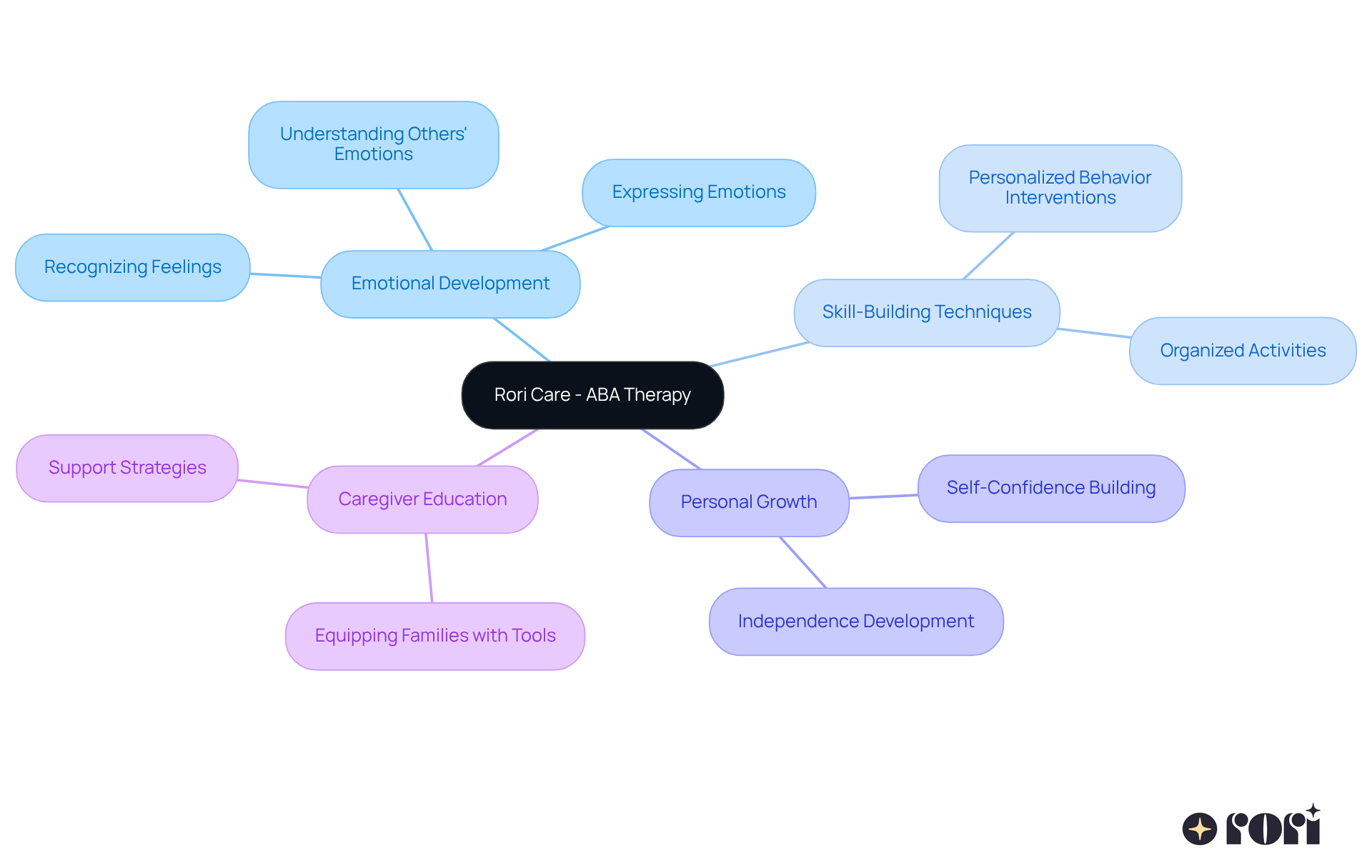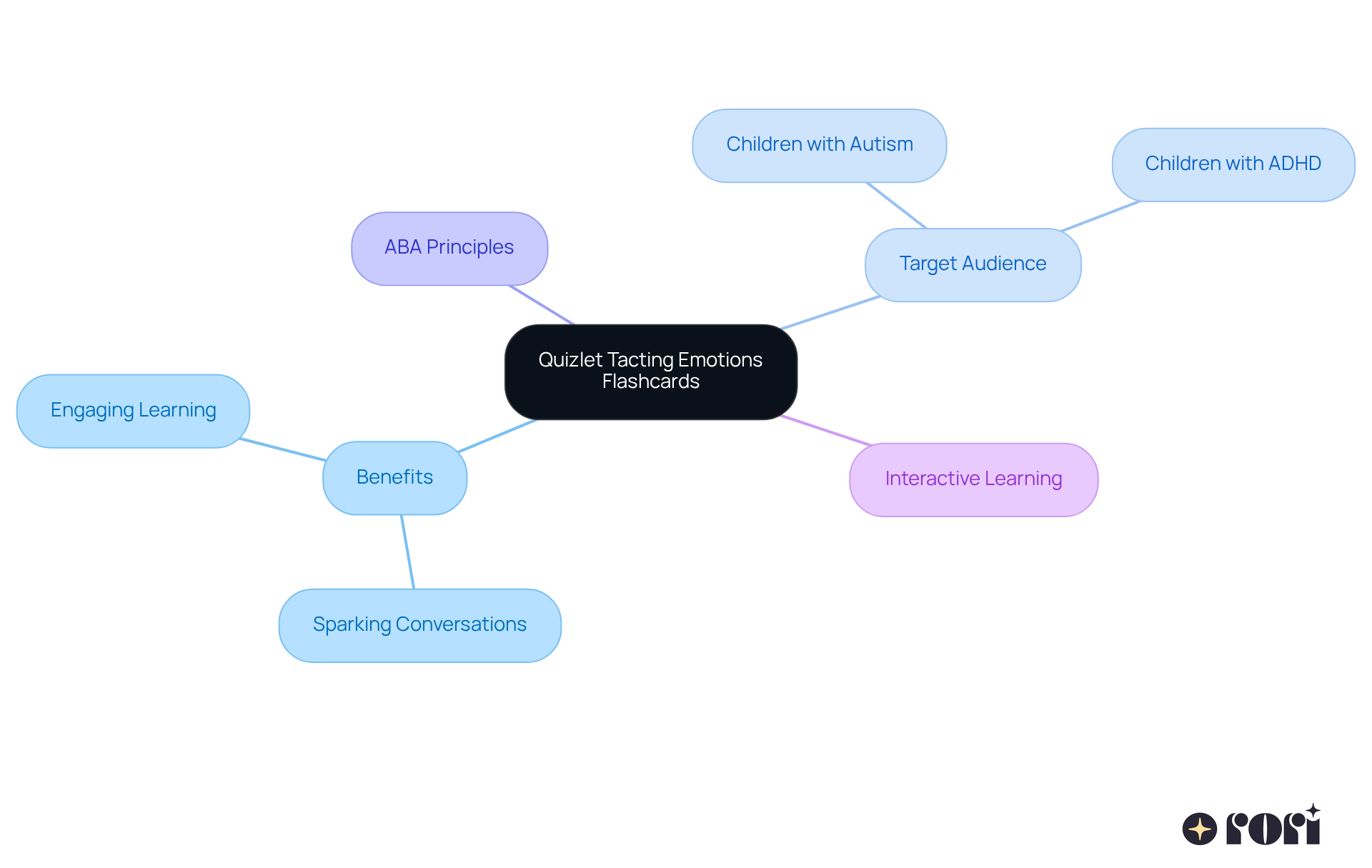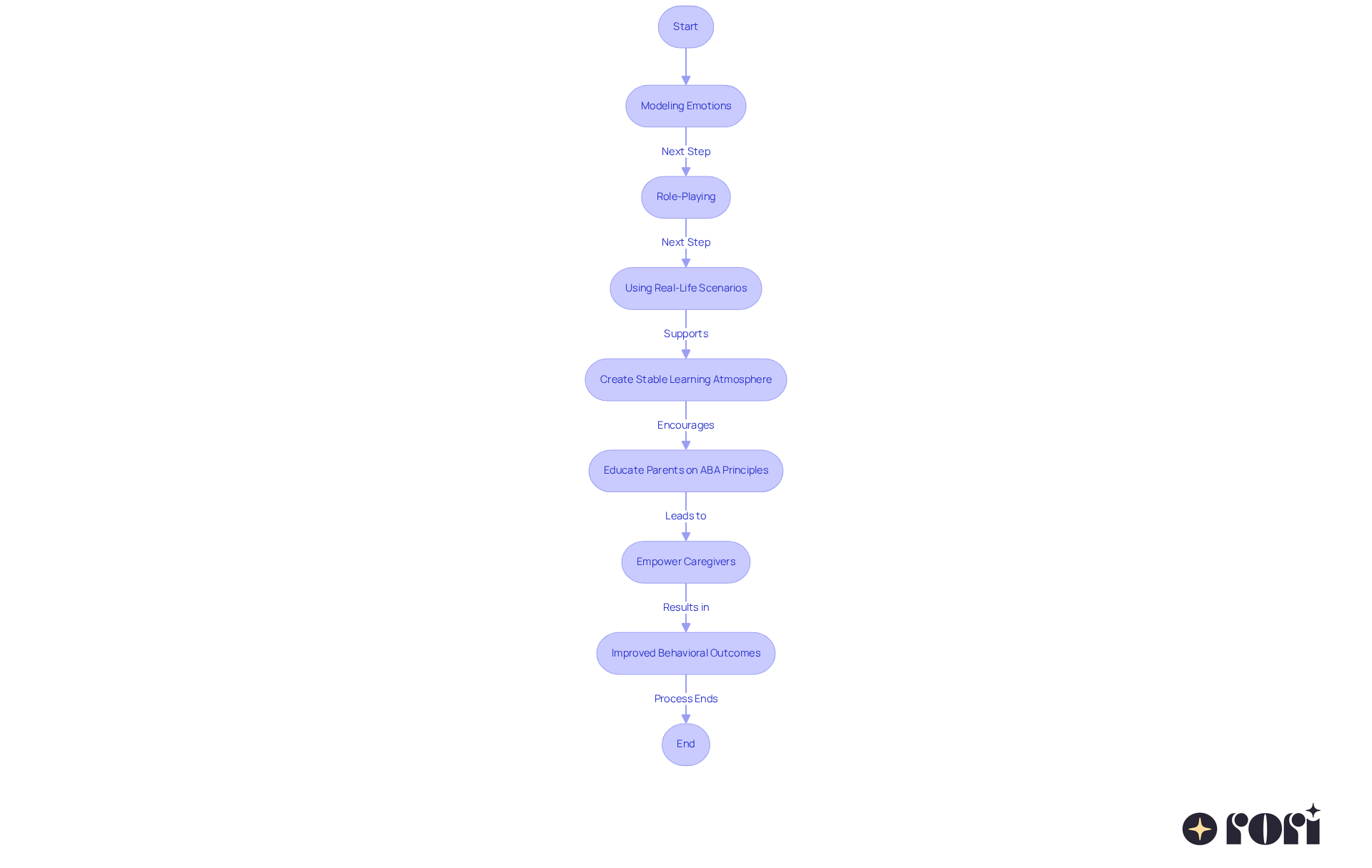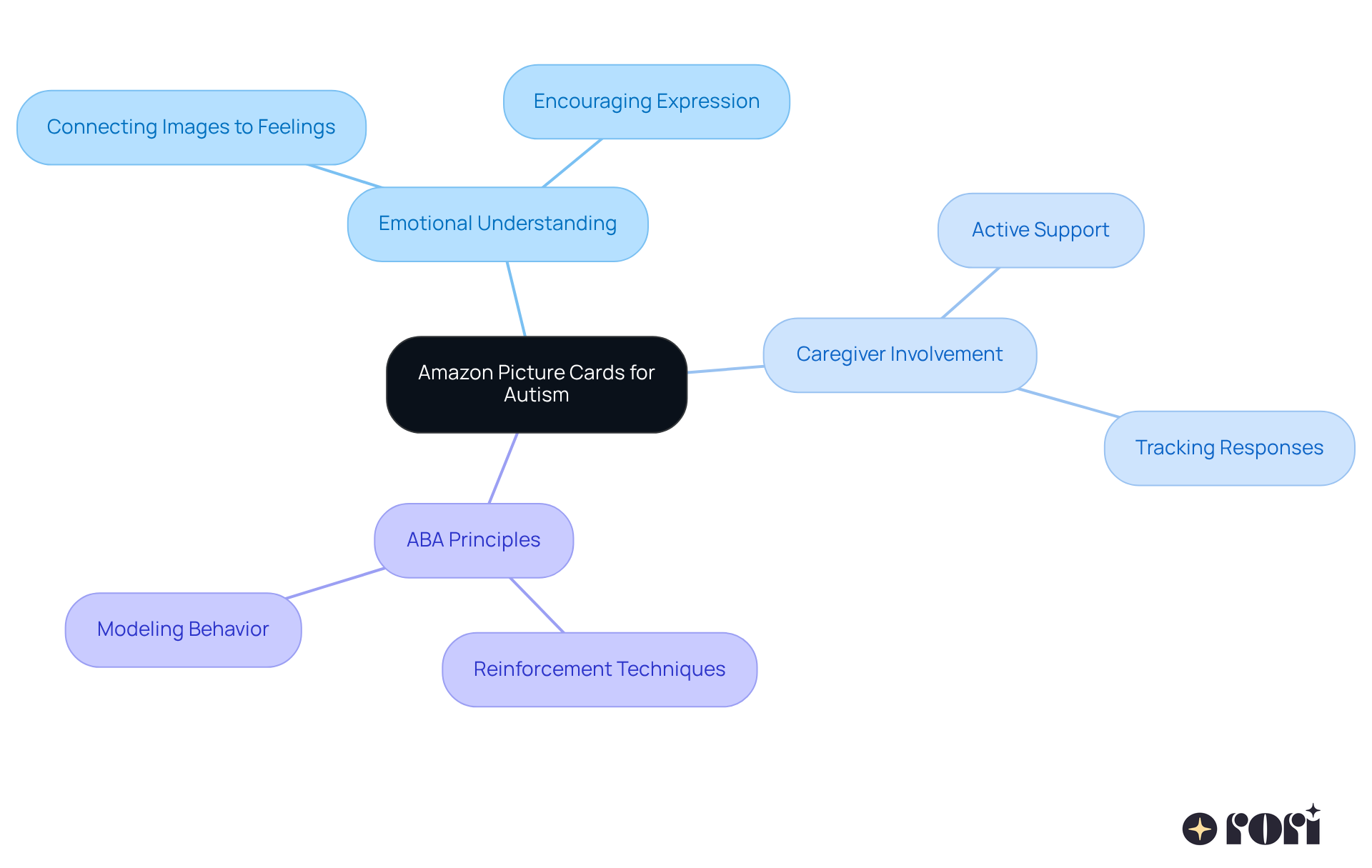This article is all about helping parents tackle emotions using Applied Behavior Analysis (ABA) techniques. It shines a light on essential tools like flashcards, worksheets, and interactive materials that boost emotional literacy and regulation. These resources are designed to empower children to recognize and express their feelings in a meaningful way.
Let’s explore this together! By using these tools, parents can create a supportive environment where kids feel comfortable sharing their emotions. Imagine a child confidently identifying when they’re feeling happy or sad—how wonderful is that? These resources not only aid in emotional recognition but also foster a sense of connection between parents and children.
We’re here to help you every step of the way! By incorporating these techniques into daily routines, parents can make a significant impact on their child’s emotional development. So, let’s dive into the world of ABA and discover how these valuable resources can transform emotional communication in your home!
Navigating the emotional landscape of childhood can be quite the journey for parents! Understanding and teaching emotions through Applied Behavior Analysis (ABA) presents unique challenges. This article brings together ten essential resources designed to empower caregivers in enhancing their children's emotional literacy and regulation skills.
But here’s the big question: how can parents effectively use these tools to nurture genuine emotional connections and growth in their children? Let’s explore this together! We’re here to help you every step of the way!
At Rori Care, we understand that navigating the world of ABA therapy can feel overwhelming for parents. Our various techniques are designed not just for personal growth, but to help young people gain the independence they deserve through essential skill-building. 🌱
Imagine organized activities that not only encourage kids to recognize their feelings but also help them express themselves. This is all about tacting emotions ABA and understanding the emotions of others—a crucial step in their journey! By using personalized behavior intervention strategies crafted by our skilled analysts, we ensure that each child’s unique psychological needs are met with care.
We believe that fostering a supportive environment is key to growth and learning. That’s why we also focus on educating caregivers, equipping families with the tools they need to provide effective support. Let’s explore this together! We’re here to help you every step of the way! 💖

Quizlet offers a fantastic variety of flashcards that assist in tacting emotions ABA, making it an invaluable resource for parents looking to boost their children's emotional literacy. These digital tools allow kids to learn and practice vocabulary related to feelings in a fun and interactive way, which is especially beneficial for those with Autism Spectrum Disorders or ADHD.
Parents can use these flashcards to spark conversations about emotions, helping children connect words to their own experiences. By incorporating ABA principles, caregivers can align their strategies and enhance tacting emotions ABA to track their child’s understanding of feelings, leading to more effective behavioral support. Plus, the platform’s gamified approach makes learning enjoyable and engaging, which can really help with retaining those tricky abstract concepts.
Let’s explore this together! With resources like Quizlet, you can create a supportive environment where your child feels comfortable expressing their feelings.

Teachers Pay Teachers offers a wonderful array of customizable materials for teaching emotions! 😊 These resources include worksheets, games, and visual aids that can easily be adapted to fit different learning styles and levels. Parents can choose materials that truly resonate with their child's interests, making the learning experience more relatable and effective. This flexibility allows for a tailored approach to tacting emotions aba in education.
Imagine being able to select resources that not only engage your child but also connect with them on a personal level! By utilizing these materials, you can create a learning environment that feels just right for your little one. Let’s explore this together and make the process of tacting emotions aba an enjoyable journey for both you and your child!
The 'How to ABA' guide is designed to assist caregivers in tacting emotions aba while navigating the important task of teaching feelings recognition. It offers a step-by-step approach that includes techniques like modeling emotions, engaging in role-play, and using real-life scenarios. These methods can really assist young individuals in tacting emotions aba and recognizing and labeling their feelings.
By following these steps, caregivers can create a stable learning atmosphere that not only supports professional therapy sessions but also promotes tacting emotions aba to enhance their child's emotional literacy. Plus, when parents are educated about ABA principles and strategies, they gain better support and a deeper understanding. This knowledge empowers them to make informed choices that positively impact their child's development.
Isn't that wonderful? This active involvement doesn’t just lead to improved behavioral outcomes; it also boosts caregivers' confidence, reduces stress, and fosters better family dynamics. Let’s explore this journey together!

At Blue ABA Therapy, we offer a variety of resources designed to assist in tacting emotions aba and teaching emotional labeling. These include:
These resources facilitate tacting emotions aba, making it easier for young learners to recognize and express their feelings. By using these tools, parents can reinforce what’s taught in therapy, helping kids become more skilled at sharing their emotions in different situations.
And there’s more! Through our educational sessions for parents, you’ll learn about ABA principles and strategies that can boost your ability to support your child’s behavioral goals. This active involvement not only promotes consistency in emotional learning but also improves tacting emotions aba, resulting in better behavioral outcomes. When you’re informed, you can make choices that positively impact your child’s growth, reduce stress, and improve family dynamics. Let’s explore this together!

At Discovery ABA, we understand that tacting emotions ABA is important for helping youth with emotional regulation, which can be a challenge for parents. 🌟 Incorporating simple methods like deep breathing exercises, visual schedules, and sensory breaks into daily routines can make a big difference in how young individuals manage their emotions.
By engaging in educational programs, parents can deepen their understanding of ABA principles and strategies related to tacting emotions ABA. This knowledge empowers them to make informed choices that positively impact their children's progress and lead to better behavioral outcomes. Imagine working together with your child to identify triggers and develop coping strategies—this collaboration fosters a sense of control and resilience during tough times.
Your active involvement not only enhances the support provided at home but also empowers caregivers, helping to reduce stress within the family. Let’s explore this journey together! We’re here to help you every step of the way!

Etsy offers a delightful range of printable tacting emotions ABA flashcards that are not only visually appealing but also engaging! 🎉 These resources can be used in fun activities like matching games or storytelling, helping in tacting emotions ABA while reinforcing emotional vocabulary in a playful way. The tactile nature of these printable cards allows young learners to physically interact with the material, enriching their educational experience and making it truly memorable. Let’s explore this together and see how these tools can support your child's learning journey!

Amazon offers a wonderful selection of picture cards designed especially for kids with autism. 🌟 These visual aids for tacting emotions ABA showcase different emotions and situations, assisting little ones in connecting images with their feelings. By weaving these cards into everyday chats, parents can boost their child's emotional understanding through tacting emotions ABA and encourage clearer expression of feelings.
Caregivers can actively support their child's behavioral goals by using ABA principles like reinforcement and modeling while focusing on tacting emotions ABA. This hands-on involvement, along with consistent tracking of their child's responses, creates a nurturing environment that maximizes the benefits of these interventions. Let’s explore this together and see how we can make a positive impact!

Rori Care's Emotional Regulation Toolkit is designed to support guardians in nurturing their children's emotional growth. This toolkit features worksheets, activity guides, and visual aids that focus on teaching essential regulation techniques. By using these resources, guardians can create a structured approach to tacting emotions aba, which helps ensure a consistent and effective therapy journey for their kids.
What's even better? The toolkit empowers guardians with a deeper understanding of ABA principles and strategies related to tacting emotions aba. This knowledge enables them to make informed decisions that can positively impact their children's progress. When guardians actively participate, they enhance the support they provide at home, leading to improved behavioral outcomes. Ultimately, this fosters a more effective and lasting influence on their children's emotional development.
Let’s explore this together! With the right tools and support, we can make a meaningful difference in our children's lives.
Finding the right resources for understanding emotions can be a bit overwhelming, right? Luckily, there are plenty of options available that cater to different learning styles! From interactive apps to fun hands-on activities, parents can choose what works best for their little ones. This variety not only keeps kids engaged but also ensures they can develop their emotional literacy in ways that feel natural to them.
By equipping ourselves with some principles and strategies for tacting emotions ABA, we can make the most of these resources. This knowledge helps us make informed choices that can positively impact our children's development. Plus, when caregivers feel confident in their understanding, it empowers them to actively support their child's behavioral goals. So, let’s explore this journey together and find the best tools to help our kids thrive!

Navigating the emotional landscape of children, especially those with unique learning needs, is a vital journey. With effective ABA resources, parents can enhance their children's emotional literacy and regulation. It’s all about tacting emotions in different contexts. By utilizing these resources, caregivers can create a safe space for children to express and understand their emotions.
Key insights include:
These resources not only help with emotional identification but also empower parents, equipping them with knowledge and strategies to enhance their involvement in their child's emotional development journey.
Ultimately, these resources are more than just tools for learning; they lay the groundwork for building emotional intelligence and resilience in children. Engaging with these tools can lead to better behavioral outcomes and stronger family dynamics. By actively participating in this process, caregivers can make a meaningful impact on their children's emotional growth, ensuring they thrive both in and out of therapeutic settings. Let’s explore this together!
What is Rori Care's approach to ABA therapy?
Rori Care focuses on comprehensive emotional development strategies through ABA therapy, emphasizing personal growth and independence for young people by building essential skills.
How does Rori Care help children recognize and express their emotions?
Rori Care provides organized activities that encourage children to recognize their feelings and express themselves, focusing on tacting emotions and understanding the emotions of others.
What role do caregivers play in Rori Care's therapy approach?
Rori Care emphasizes educating caregivers and equipping families with the tools they need to provide effective support for their children’s emotional development.
How can Quizlet's flashcards assist in emotional literacy?
Quizlet offers a variety of flashcards that help children learn and practice vocabulary related to feelings, making it a valuable resource for parents aiming to boost their children's emotional literacy, especially for those with Autism Spectrum Disorders or ADHD.
In what ways can parents use Quizlet flashcards?
Parents can use Quizlet flashcards to spark conversations about emotions, helping children connect vocabulary to their experiences and track their understanding of feelings through ABA principles.
What types of materials does Teachers Pay Teachers provide for teaching emotions?
Teachers Pay Teachers offers customizable materials such as worksheets, games, and visual aids that can be adapted to fit different learning styles and levels, making the learning experience more relatable and effective.
How can parents personalize the learning experience using Teachers Pay Teachers resources?
Parents can select resources that resonate with their child's interests, allowing for a tailored approach to teaching emotions and creating a supportive learning environment.